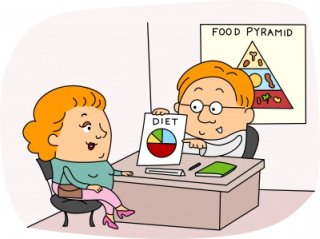Dietitians and Nutritionists
How To Become a Nutritionist
Dietitians and Nutritionists
They plan food and nutrition programs, supervise meal preparation, and oversee the serving of meals. They prevent and treat illnesses by promoting healthy eating habits and recommending dietary modifications. Earnings of these positions were $61,650 per year, or $29.64 per hour in May 2021. Employment of dietitians and nutritionists is expected to increase 11% during the 2020 to 2030

Dietitians and Nutritionists
Nature of the Work
For example, dietitians might teach a patient with high blood pressure how to use less salt when preparing meals, or create a diet reduced in fat and sugar for an overweight patient.
Dietitians manage food service systems for institutions such as hospitals and schools, promote sound eating habits through education, and conduct research. Many dietitians specialize,becoming a clinical dietitian, community dietitian, management dietitian, or consultant.
Clinical Dietitians provide nutritional services to patients in hospitals, nursing care facilities, and other institutions. They assess patients' nutritional needs, develop and implement nutrition programs, and evaluate and report the results. They also confer with doctors and other healthcare professionals to coordinate medical and nutritional needs. Some clinical dietitians specialize in managing the weight of overweight patients or in the care of renal (kidney), diabetic, or critically ill patients. In addition, clinical dietitians in nursing care facilities, small hospitals, or correctional facilities may manage the food service department.
Community Dietitians counsel individuals and groups on nutritional practices designed to prevent disease and promote health. Working in places such as public health clinics, home health agencies, and health maintenance organizations, community dietitians evaluate individual needs, develop nutritional care plans, and instruct individuals and their families. Dietitians working in home health agencies provide instruction on grocery shopping and food preparation to the elderly, children, and individuals with special needs.
Employment and Job Outlook
Employment of dietitians and nutritionists hold about 73,000 jobs in 2020. It's expected to increase 11 percent during the 2020-2030 projection decade, about as fast as the average for all occupations. Job growth will result from an increasing emphasis on disease prevention through improved dietary habits. A growing and aging population will boost demand for nutritional counseling and treatment in hospitals, residential care facilities, schools, prisons, community health programs, and home healthcare agencies. Public interest in nutrition and increased emphasis on health education and prudent lifestyles also will spur demand, especially in food service management Dietitians and Nutritionists Careers
Also, with increased public awareness of obesity and diabetes, Medicare coverage has been expanded to include medical nutrition therapy for renal and diabetic patients, creating job growth for dietitians and nutritionists specializing in those diseases.
Hospitals will continue to employ a large number of dietitians and nutritionists to provide medical nutritional therapy and plan meals. But hospitals also will continue to contract with outside agencies for food service and move medical nutritional therapy to outpatient care facilities, slowing job growth in hospitals relative to food service, outpatient facilities, and other employers.
Education and Qualifications
Dietitians and nutritionists typically need a bachelor's or higher degree in dietetics, food and nutrition, or a related field to enter the occupation. Many dietitians and nutritionists have an advanced degree.Many states require dietitians and nutritionists to be licensed in order to practice. Other states require only state registration or certification to use certain titles, and a few states have no regulations for this occupation.
The requirements for state licensure and state certification vary by state, but most include having a bachelor’s or an advanced degree in food and nutrition or a related area, completing supervised practice, and passing an exam.Dietitians and Nutritionists
Source Information:
U.S.Department of Labor Occupational Outlook Handbook April 2022
Careers and Jobs Resources
To Top of the Page
From Dietitians and Nutritionists to Wellness Industry
From Dietitians and Nutritionists to For Your Dream Career Home Page


